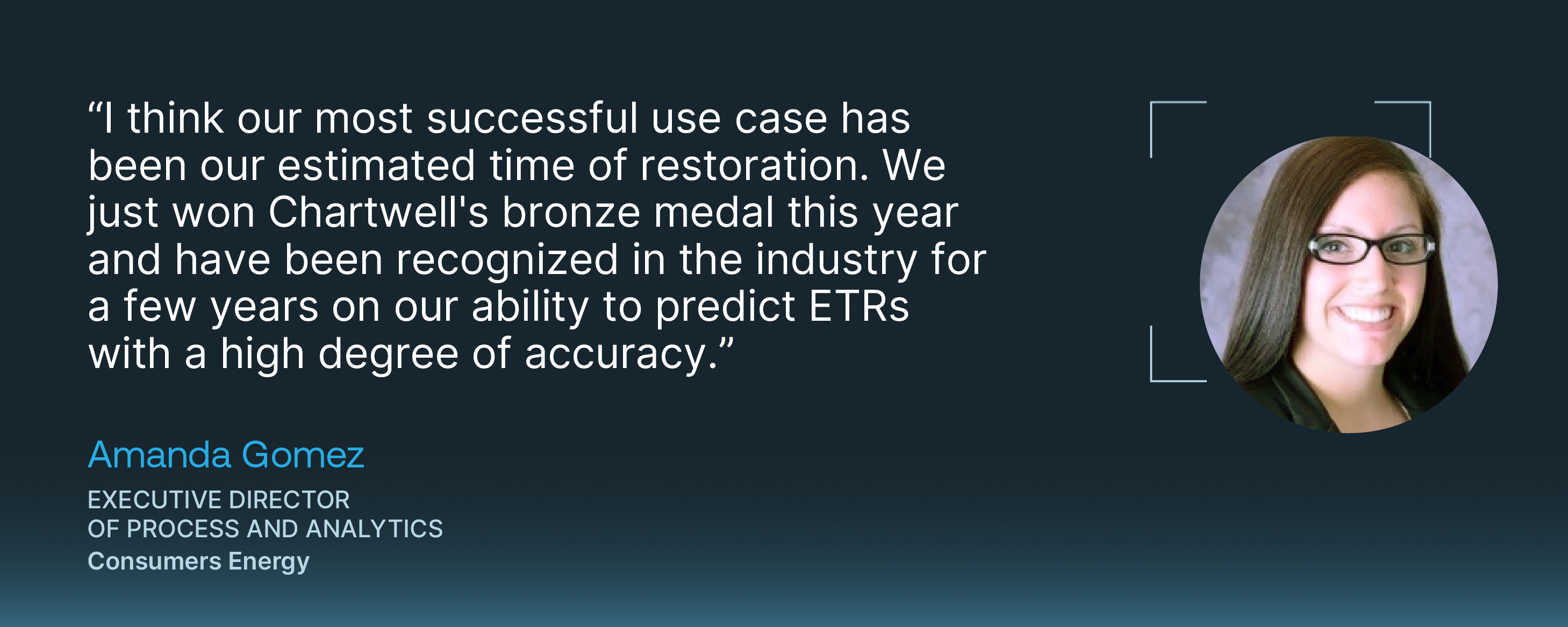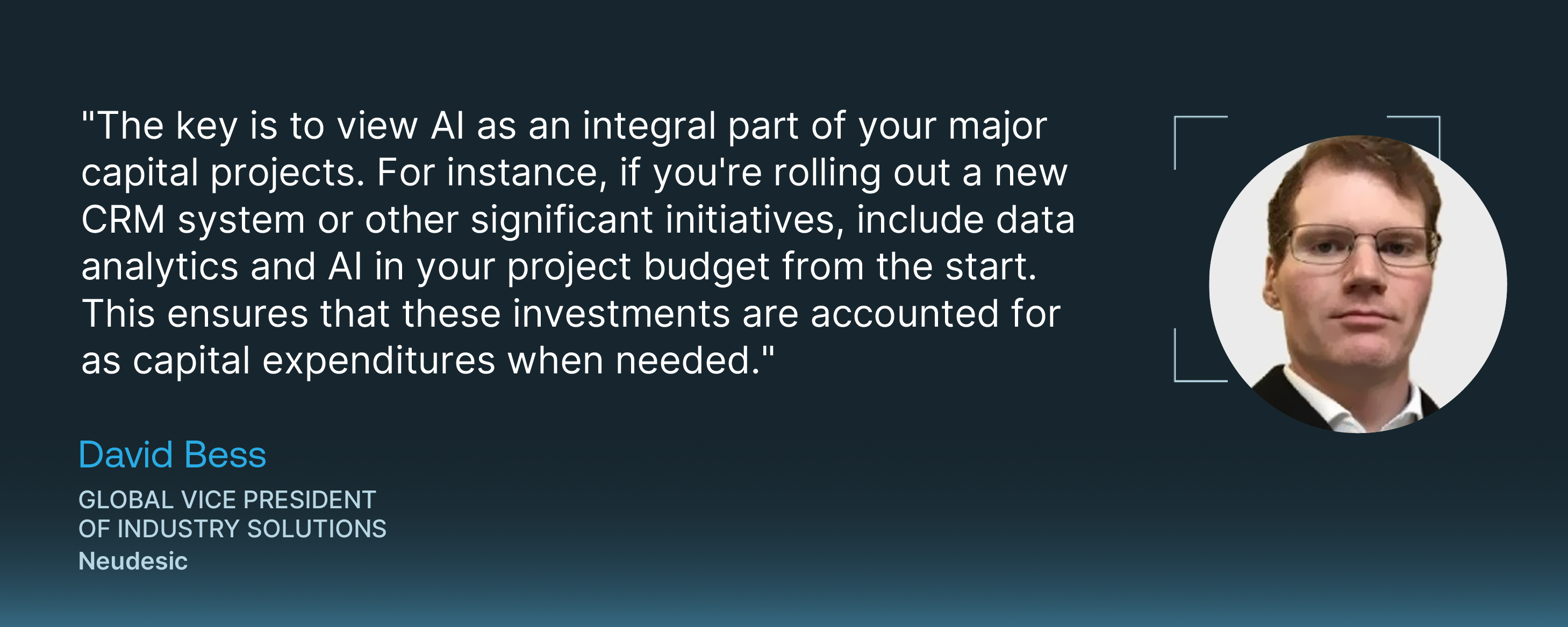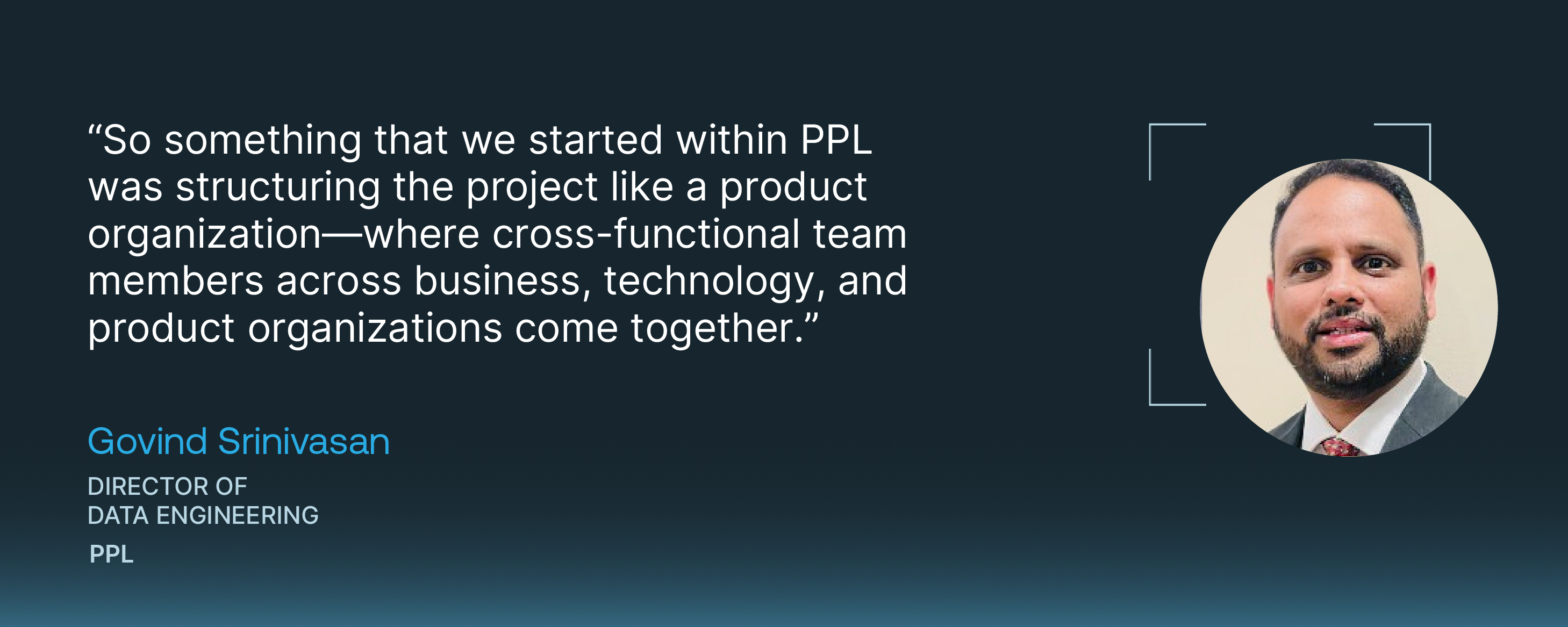
The transition from AI pilot projects to full-scale adoption in the utility sector, specifically in realms such as smart meter analytics and advanced metering infrastructure, is a path filled with potential yet challenged by complexity. This blog post, inspired by insights from a recent panel of industry experts, offers a roadmap for utility companies. It draws on the experiences of Amanda Gomez of Consumers Energy, Govind Srinivasan from PPL Corporation (PPL), and Morgan Sabnekar and David Bess of Neudesic, offering strategies for moving AI projects beyond the pilot phase. Their insights offer helpful ways to de-risk integrating AI in utilities-from enhancing operational efficiency with smart grid data analytics to improving customer interactions through generative AI use cases in utilities.
Key to success: Identifying the right use case for AI in Utilities
In the utilities sector, companies are exploring a myriad of AI applications, from risk prediction and document classification to enhancing workforce productivity and improving customer experiences to general rate cases and field operations. Understanding the ROI is not only a great alignment mechanism for the team, but can become a rallying cry and point of pride when implementations prove difficult or slow-moving. Focusing on worker productivity and customer satisfaction are popular focal points that align with core business objectives.
For instance, Consumers Energy‘s notable success story involves the development of a machine learning model for predicting Estimated Time of Restoration (ETR) with high accuracy. This model not only earned industry recognition but also significantly boosted the Customer Experience Index (CEI) by ensuring reliability and transparency in service restoration timelines.”
Building AI at Utilities: Challenges and strategies
The panel discussed many reasons why a pilot may stall or lack adoption while offering mitigating strategies to address them.
Integration challenges with existing systems
One significant hurdle is ensuring AI solutions can seamlessly integrate with legacy systems. These older systems often lack the flexibility or infrastructure to support advanced AI functionalities, necessitating creative engineering solutions or sometimes significant system upgrades.
Mitigating strategy: Utilities are adopting modular architecture and APIs to facilitate easier integration of AI technologies with existing infrastructures. By creating more adaptable systems, utilities can implement AI solutions more smoothly and with a lower risk of disrupting critical operations.
Budgeting for the future
Utilities’ unique regulatory structure combined with the number of AI applications within a utility can make it difficult to plan and secure the necessary funding for its investment.
Mitigating strategy: AI should be seen and treated as a strategic investment across the organization. Working with business leaders, especially financial operations (FinOps), to identify use cases and their potential ROI can help socialize its value and nest future funding within existing or planned investments.
Data privacy and compliance
With the increasing use of customer data in AI applications, adhering to data privacy laws and regulations becomes a complex challenge. The sensitivity of customer data and the stringent requirements of regulations like GDPR or CCPA complicate the deployment of AI models that rely on vast amounts of personal information.
Mitigation strategy: Establishing rigorous data governance frameworks, like Responsible AI, and compliance protocols is crucial. Utilities are investing in advanced data anonymization techniques and ensuring that data handling practices meet all regulatory requirements, thus safeguarding customer privacy while enabling AI innovations.
Scalability and infrastructure
As AI projects move from proof of concept to production, scalability becomes a critical concern. The infrastructure needed to scale AI solutions, especially those requiring high computational power, can be prohibitively expensive.
Mitigation strategy: The panel noted that utilities have been for some time turning to cloud solutions to mitigate these challenges. Cloud platforms and smart meter analytics solutions offer scalable infrastructure tailored to the needs of AI applications, with the added benefits of cost efficiency and flexibility. Furthermore, adopting FinOps practices helps manage and optimize cloud expenses, aligning costs with business value generated by AI projects.
Skill gaps and talent acquisition
The scarcity of talent with the requisite skills in AI, machine learning, and data science poses a significant barrier to implementing and sustaining AI initiatives.
Mitigation strategy: To combat this, utilities are not only focusing on recruiting talent but also collaborating with third-party technology services firms with deep experience in the utilities space. Fostering a culture of continuous learning and innovation within the organization encourages skill development and knowledge sharing is also a sound strategy.
Change management and user adoption
Resistance to change and skepticism about AI’s effectiveness can hinder the adoption of AI technologies, especially in an industry as traditionally conservative as utilities.
Mitigation strategy: Effective change management practices are vital for encouraging adoption. This includes transparent communication about the benefits and implications of AI projects, comprehensive training programs for employees, and involving end-users in the development process to ensure the solutions meet their needs and expectations.
Data management, quality, and governance
The success of any IT project relies on quality data. AI is no different; however, its application and broad accessibility creates significant ROI and can impede or even threaten the ROI of a project, if not properly handled.
Mitigation strategy: Platforms, like Microsoft Fabric, Databricks, and Profisee, are emerging to address the challenges presented by distributed structured and unstructured data; however, ongoing management, classification, and governance is still needed to protect your AI investment. Creating or embedding AI governance into existing frameworks is critical to promoting and sustaining AI ROI.
Innovation and collaboration
Innovation in the utilities industry demands a structured approach. PPL emphasized the importance of a product organization structure-where members from business, technology, and product development collaborate to continuously identify and evaluate potential use cases. Establishing FinOps best practices and involving legal and compliance in the early stages were critical for addressing costs and risks effectively.
Adopting a scale agile delivery model and forming governance teams are pivotal for tackling challenges head-on. For instance, shifting from a project-focused approach to viewing AI initiatives as continuous, evolving products can significantly enhance agility and effectiveness.
The journey of integrating AI within the utilities sector is complex and challenging. However, through strategic collaboration, diligent management of data and resources, and a commitment to continuous improvement, utilities can harness the power of AI to enhance operational efficiency, improve customer experiences, and drive innovation. As the industry progresses, these insights and partners, like Neudesic, will serve as a valuable guide for other organizations navigating their AI transformation journeys.
ChatGPT was used to summarize the transcript of the panel and portions of this blog. The content above was fine-tuned by humans. The original panel took place on April 9th, 2024 at the Utility Analytics Conference.
Related Posts


